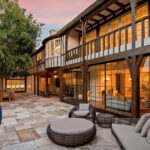Have you ever walked past a massive concrete building that felt more like a fortress than a home or office? Towering blocks, rough textures, and raw cement surfaces that seem cold to some yet powerful to others — that’s Brutalist architecture. Often described as bold, honest, and unapologetically raw, Brutalism is one of the most debated architectural styles in history. Some call it ugly; others call it genius. But whether you love it or hate it, you simply can’t ignore it. So, what exactly is Brutalist architecture, where did it come from, and why does it continue to influence design even today? Let’s dive deep. Origins of Brutalist Architecture The word Brutalism comes from the French phrase “béton brut,” meaning raw concrete. The term was first used by architectural critic Reyner Banham in the 1950s to describe the works of Swiss-French architect Le Corbusier, who often used exposed concrete in his designs. Brutalism emerged after World War II, during a time when cities needed to rebuild quickly and affordably. Governments and institutions were looking for strong, inexpensive, and practical designs that could accommodate growing populations. Concrete became the material of choice — it was cheap, durable, and versatile. By the 1950s and 1960s, Brutalist architecture was booming across Europe and North America. It became the go-to style for universities, government buildings, libraries, and housing projects. Key Characteristics of Brutalist Architecture Brutalism isn’t subtle — it’s striking, geometric, and often intimidating. Some of its most defining features include: In short, Brutalism …
What is Brutalist Architecture? The Bold and Controversial Design Style Explained
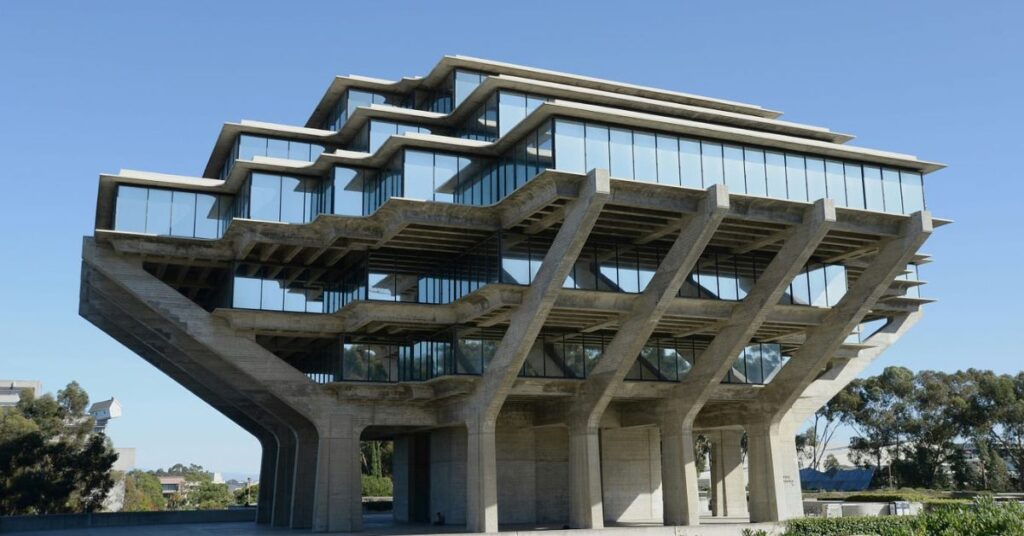
Have you ever walked past a massive concrete building that felt more like a fortress than a home or office? Towering blocks, rough textures, and raw cement surfaces that seem cold to some yet powerful to others — that’s Brutalist architecture.
Often described as bold, honest, and unapologetically raw, Brutalism is one of the most debated architectural styles in history. Some call it ugly; others call it genius. But whether you love it or hate it, you simply can’t ignore it.
So, what exactly is Brutalist architecture, where did it come from, and why does it continue to influence design even today? Let’s dive deep.
Origins of Brutalist Architecture
The word Brutalism comes from the French phrase “béton brut,” meaning raw concrete. The term was first used by architectural critic Reyner Banham in the 1950s to describe the works of Swiss-French architect Le Corbusier, who often used exposed concrete in his designs.
Brutalism emerged after World War II, during a time when cities needed to rebuild quickly and affordably. Governments and institutions were looking for strong, inexpensive, and practical designs that could accommodate growing populations. Concrete became the material of choice — it was cheap, durable, and versatile.
By the 1950s and 1960s, Brutalist architecture was booming across Europe and North America. It became the go-to style for universities, government buildings, libraries, and housing projects.
Key Characteristics of Brutalist Architecture
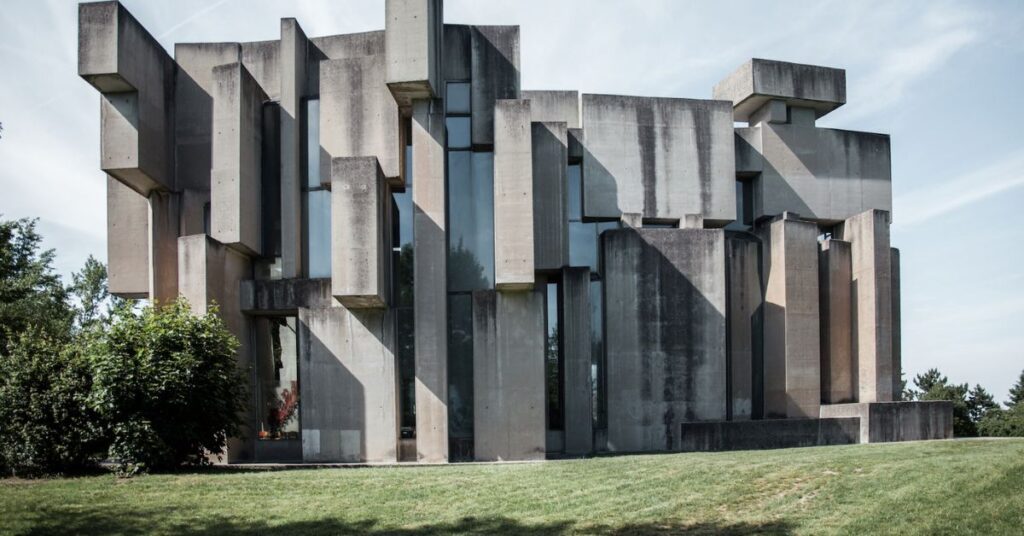
Brutalism isn’t subtle — it’s striking, geometric, and often intimidating. Some of its most defining features include:
- Raw Materials – Exposed concrete is the hallmark of Brutalism, though steel, glass, and brick were also used. Buildings were rarely painted or decorated.
- Massive Scale – Structures were monumental, often resembling fortresses or bunkers.
- Geometric Shapes – Strong lines, repetitive patterns, and block-like forms dominate.
- Function Over Form – The design prioritized practicality and social purpose over aesthetics.
- Exposed Structure – Instead of hiding structural elements, Brutalist buildings made them visible as part of the design.
In short, Brutalism rejected ornamentation and focused on honesty of material and form.
Why Brutalism Was Popular
Brutalism rose during a time when architecture was deeply connected to social ideals. Post-war governments wanted to build affordable housing and civic spaces that reflected equality and progress. Brutalism offered:
- Affordability – Concrete was cheap compared to traditional stone or steel.
- Durability – Brutalist buildings were designed to last for decades, even centuries.
- Efficiency – Large, functional spaces could be built quickly.
- Symbolism – The style represented strength, honesty, and modern progress.
To many, Brutalism was not just an architectural style but a social statement — a way to rebuild the world on stronger foundations.
Famous Examples of Brutalist Architecture
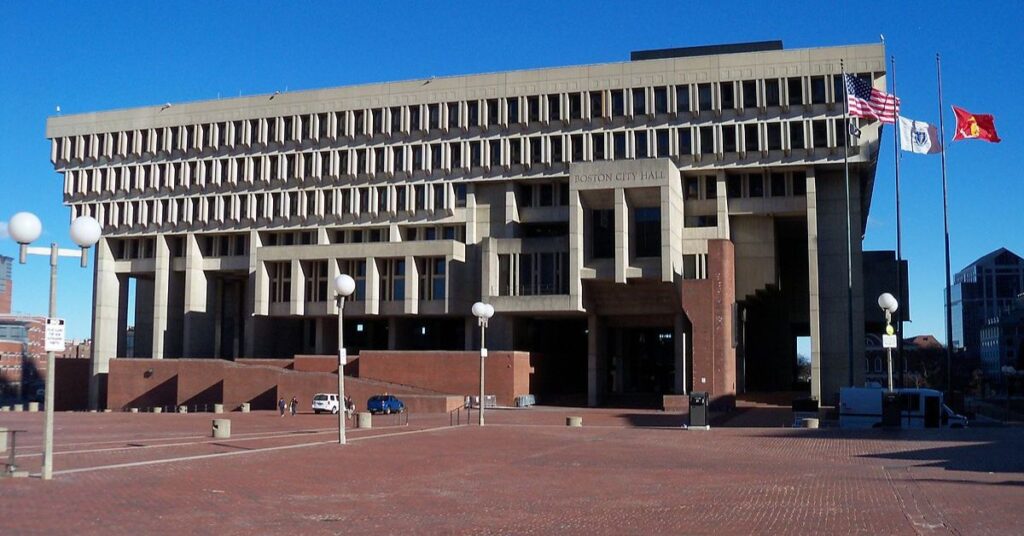
Brutalism can be found all over the world. Some of its most iconic examples include:
- Unité d’Habitation (Marseille, France) – Designed by Le Corbusier in 1952, this housing project became a blueprint for Brutalist design.
- Barbican Centre (London, UK) – A massive residential and cultural complex that remains one of the most famous Brutalist landmarks.
- Boston City Hall (Boston, USA) – A divisive building, praised by architects for its bold design but often disliked by the public.
- National Theatre (London, UK) – Known for its dramatic, fortress-like presence along the Thames.
- Habitat 67 (Montreal, Canada) – A futuristic housing complex by architect Moshe Safdie, featuring stacked concrete modules.
These structures showcase the diversity within Brutalism, from housing to cultural centers to government facilities.
Criticism of Brutalist Architecture
Despite its bold vision, Brutalism has faced heavy criticism, especially from the public. Common complaints include:
- “Ugly and Cold” – Many people find Brutalist buildings harsh, unwelcoming, and depressing.
- Urban Decay – Some housing projects became associated with crime and poverty, giving Brutalism a bad reputation.
- Maintenance Issues – Exposed concrete weathers poorly and often stains, leading to unattractive appearances over time.
By the late 1970s, Brutalism was largely falling out of favor. Cities began to see these buildings as outdated eyesores rather than architectural masterpieces.
The Revival of Brutalism
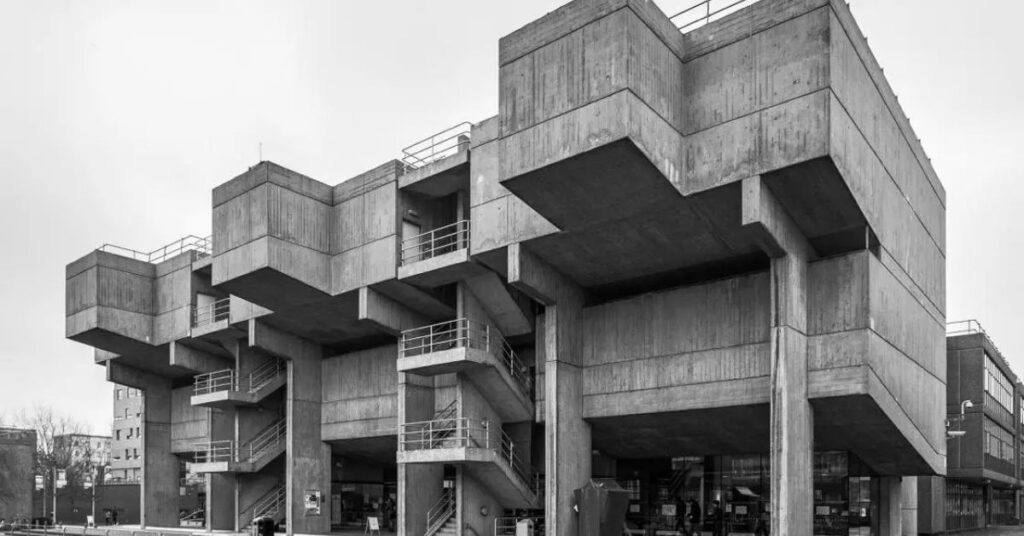
Interestingly, Brutalism has seen a renaissance in recent years. Many younger architects, designers, and even interior decorators are revisiting its principles. Why?
- Minimalism is Trending – Brutalism’s clean lines and focus on function resonate with today’s minimalist design culture.
- Honesty of Materials – Exposed concrete and raw finishes appeal to those seeking authenticity in design.
- Cultural Reappraisal – What was once dismissed as ugly is now viewed as bold and iconic.
- Instagram Influence – Brutalist buildings, with their dramatic forms and strong shadows, photograph beautifully and have become social media favorites.
Even in furniture and graphic design, a “neo-Brutalist” aesthetic is emerging — proving that the style is far from dead.
Brutalism in the USA
In the United States, Brutalism was especially popular in the 1960s and 1970s for government and academic buildings. Notable examples include:
- Boston City Hall (Boston, Massachusetts)
- Geisel Library (University of California, San Diego)
- J. Edgar Hoover Building (FBI Headquarters, Washington, D.C.)
- Princeton University’s Art Museum (New Jersey)
These buildings remain controversial, but they represent an important era in American architectural history.
Why Brutalism Matters Today
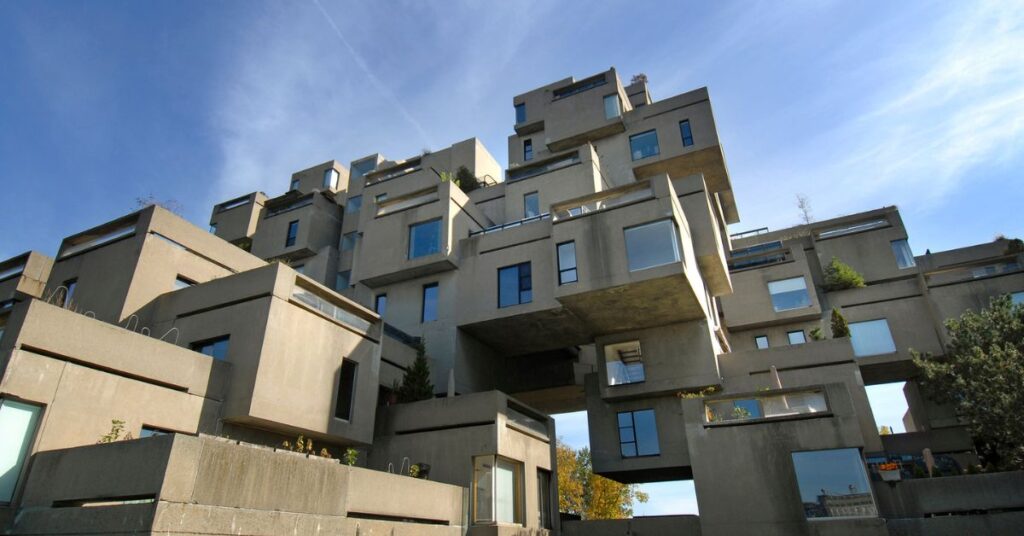
Whether you admire it or dislike it, Brutalism has left an undeniable mark on global architecture. Its significance lies in:
- Historical Value – A reflection of post-war society and urban planning.
- Architectural Honesty – A design philosophy that prioritizes function, truth, and material integrity.
- Cultural Impact – A style that continues to spark debate, influence design, and inspire new generations.
Preservationists now argue that Brutalist buildings should be protected as important cultural landmarks rather than demolished.
Final Thoughts: Love It or Hate It, Brutalism Endures
So, what is Brutalist architecture? It is more than just concrete blocks and geometric lines — it is a movement born from necessity, social ideals, and bold experimentation. Brutalism challenges us to rethink what architecture should look like and how it should serve society.
Love it or hate it, Brutalist architecture is here to stay. As cities continue to grapple with housing shortages, sustainability, and modern design needs, Brutalism’s lessons on durability, affordability, and honesty may prove more relevant than ever.


